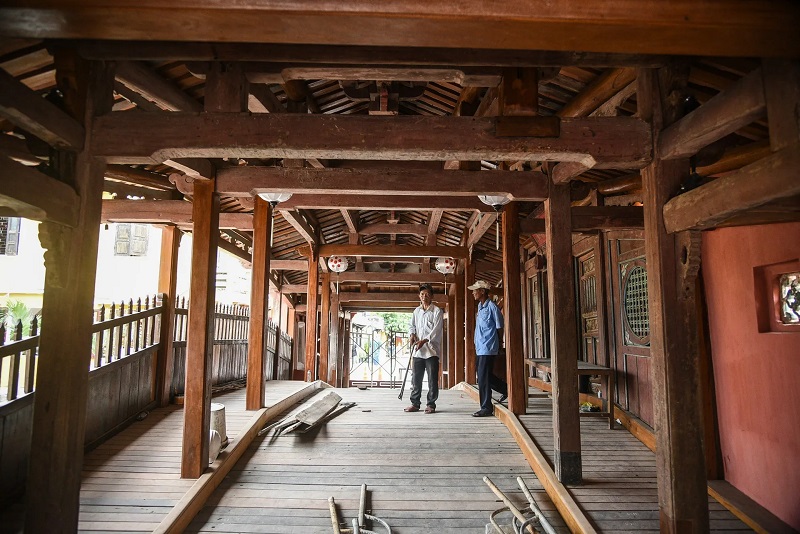The new look of Hoi An’s Covered Bridge causes controversy
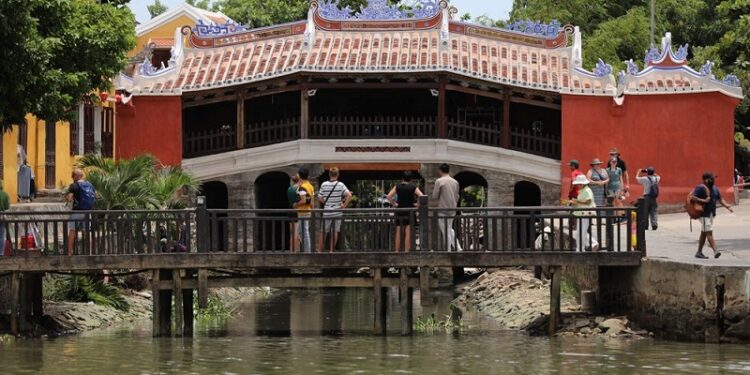
As soon as the new look of the Covered Bridge in Hoi An was revealed, many tourists argued that the relic looked “new” and “much younger” than before.
People’s honest sharing about the changes of Hoi An’s Covered Bridge
Le Huy Tuan, 45 years old, living in Da Nang, came to Hoi An on the morning of July 28 and felt “disappointed” when he saw the appearance of the Covered Bridge after the restoration. He said that the relic was lost in the heart of the old town. “If every building in Hoi An is restored like this, the town will no longer be ancient,” said Tuan.
Another tourist living in Quy Nhon commented that “the old and new structures overlap each other, neither pretending to be ancient nor new”.
Sharing the same opinion, Mr. Bui Phuoc Quang, 42 years old, a resident of Hoi An, said “this appearance is too new” compared to the previous restoration in 1996.
What does the government say about the changes to the Covered Bridge?
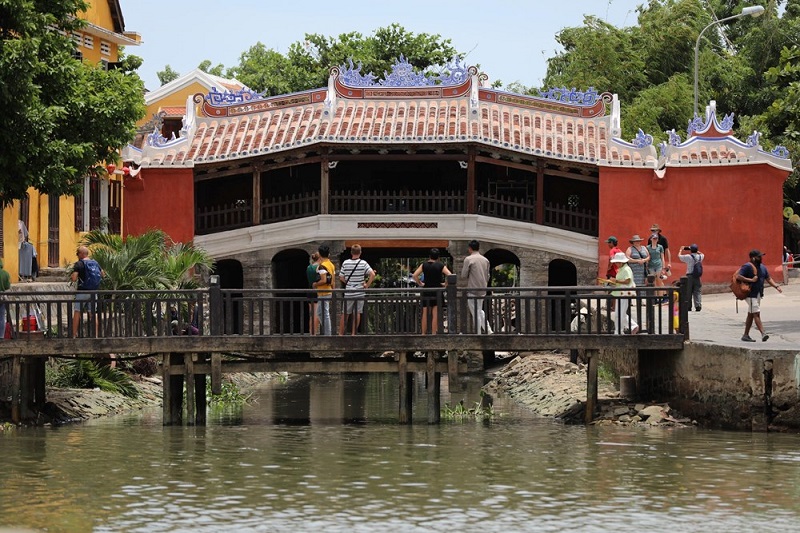
According to VnExpress, on the morning of July 28, the new Cau Pagoda was brighter because of the paint color, the details on the ridge, the decorative patterns, and the Chinese characters were written and repainted. The roof was covered with a mixture of old and new tiles. The pillars of the relic were almost intact, painted in wood color. Inside the relic, some previously damaged and hollow wooden frames were completely replaced.
Mr. Pham Phu Ngoc, Director of the Hoi An Cultural Heritage Conservation Center, said that the restoration of the Cau Pagoda was carried out in the spirit of a careful, meticulous, scientific “surgery and treatment”, from the project preparation stage to the organizational solutions and construction techniques for the restoration of the relic. The unit has collected and researched information and documents; stratigraphic exploration, analysis of architectural traces through the periods to serve the restoration.
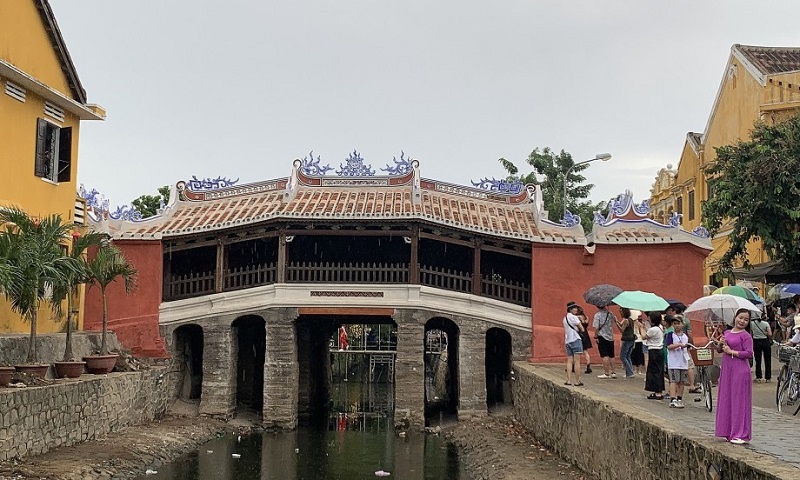
During the implementation process, the work of consulting experts, researchers, and artisans on arising problems is always focused on and carried out regularly. During the restoration process, the center once stopped the progress for a year to consult on the architecture of the bridge deck “curved or flat” due to many controversies related to the bridge deck and the girder and truss details.
Mr. Ngoc added that the survey and assessment of the current status of the relic was carried out by filming, taking photos; printing Do paper with stele inscriptions, parallel sentences, architectural decoration plans; drawing and recording the current status of the architecture; digitizing the relic using 3D technology to create a scientific database to propose solutions and forms of restoration suitable for each item and structure of the project.
The representative of the unit in charge of restoration said that the viewpoint and restoration solution throughout the project is to preserve the integrity of the overall architectural form and structure, each part, component, original artifact, with historical value preserved to the maximum extent possible. From stone bars, bricks and tiles to wooden components of the frame – beam – floor – roof rafters or details of the keel, wall panels, ceramic patterns, ancient plates, all are carefully examined, evaluated, and the damaged parts are studied and separated, trying to retain as much good components as possible, using traditional construction techniques combined with modern materials and chemicals to reinforce, strengthen, and reuse for reassembly.
In response to many opinions that the restored project looks “very young”, “shiny”, and does not retain its original ancient look, the representative of the Center said that the color after restoration of the Covered Bridge retains the original color of the old details, without any additional painting; the replaced components or reinforced components are only coated with colorless preservatives. Similar to the abutment body, the bridge piers are also completely kept intact without any intervention in color.
Regarding the color of the roof of the Covered Bridge, Mr. Ngoc said that the current color was restored based on some locations that still have the old color, combined with the survey results of similar traditional religious works in Hoi An as suggested by experts. The restoration, no matter what, cannot avoid making the relic look “new”, but the important thing is to preserve the originality, ensuring the principles in the restoration of the relic.
“Over time, through weathering, the Covered Bridge will return to its ancient, quiet appearance as in previous restorations,” Mr. Ngoc said.
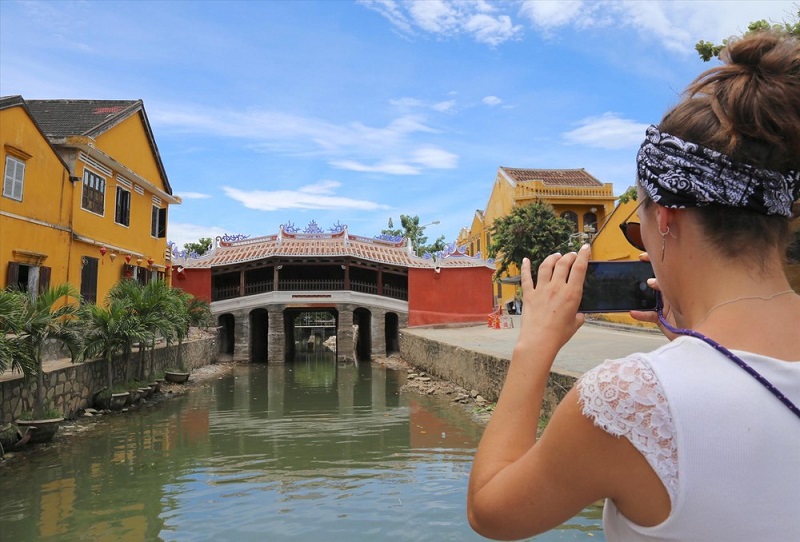
According to Dr. and architect Le Vinh An, Ho Chi Minh City University of Industry, who has participated in the conservation of many places, including Hue and is an expert at the Waseda Heritage Institute, Japan, the current appearance of the Covered Bridge is “the inevitable consequence of the complete demolition restoration solution”.
Because when wanting to dismantle the entire wooden frame system and the bridge abutment structure below, the restoration participants must first remove the entire roof structure, including tiles, ridges, eaves and decorative details on it. Because it is made of lime mortar and has been heavily weathered over time, the roof structure of the Covered Bridge is difficult to reuse, forcing it to be rebuilt according to the previous old model.
“The restoration of the Covered Bridge is completely reasonable, meeting the strict requirements on construction techniques and the requirement to preserve the original elements as much as possible according to the Vietnam Heritage Law, in line with the spirit of international conventions on the preservation of cultural heritage,” said Mr. An.
Nguyen Minh Duc, 34, a resident of Hoi An, said that any restoration or renovation project needs time to be synchronized. No one knows what the Covered Bridge looked like in the past, everyone is used to the old appearance of the Covered Bridge after several hundred years. Hoi An residents hope that tourists will continue to support the relic.
Thanh Hai, 28, a tour guide, said the restoration of the Covered Bridge is timely. He said that he guides tourists back and forth to the Covered Bridge every day, so he knows very well the extent of the damage to the relic. “Every time I pass by, I feel like it is about to collapse,” Hai said.
The Covered Bridge relic has existed for 400 years. Although it has been carefully preserved and treasured by generations of Hoi An residents, under the harsh impacts of nature and time, the relic has not been able to avoid damage and has been restored 7 times. In 2022, the structure was seriously degraded, the bridge abutments and piers were cracked and sunk, and many columns and beams were severely damaged. The People’s Committee of Hoi An City approved the restoration of the Covered Bridge with a budget of more than 20 billion VND.
The project has been completed and is expected to be inaugurated on August 3, during the 20th Hoi An – Japan Cultural Exchange in 2024.
Source: Japanese Bridge in Hoi An – A cultural symbol of the ancient town.
